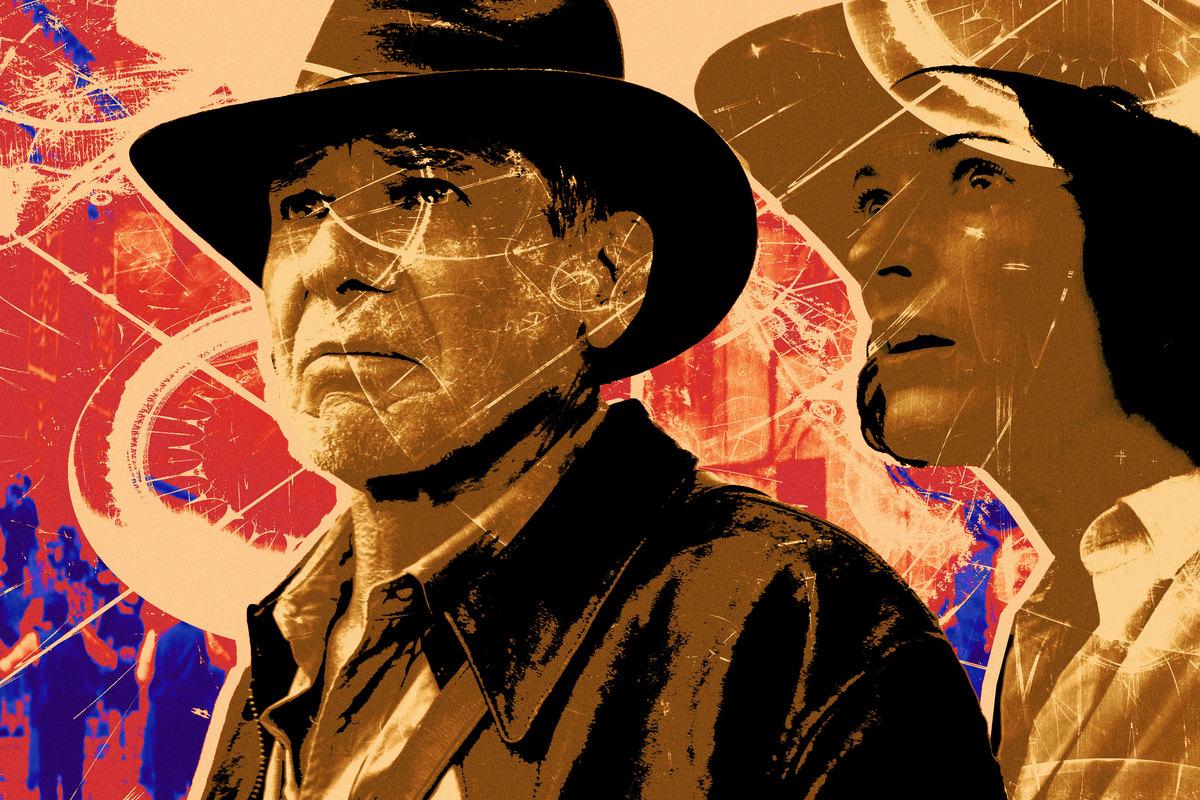

It’s safe to say that Indiana Jones and the Temple of Doom isn’t regarded as the high point of the franchise, but it has a fascinating legacy all the same. Temple of Doom’s production coincided with breakups in Steven Spielberg’s and George Lucas’s personal lives, which helps inform the film’s mean-spirited tone. The movie, in turn, is filled with some truly horrific imagery: A Thuggee death cult performs a human sacrifice that includes ripping a heart out of a man’s chest, and countless young children are enslaved to toil away in a mine. (On a much lighter note, Temple of Doom also introduced audiences to Ke Huy Quan, who is in the midst of an Oscar-winning renaissance.) Temple of Doom was so gnarly, in fact, that it led to the Motion Picture Association’s creation of the PG-13 rating. Of course, the movie’s historical significance is justifiably overshadowed by its culturally insensitive depiction of India, which wasn’t edgy as much as it was tasteless. It’s little wonder that Spielberg and Lucas rounded out the original trilogy by repeating what worked so well in Raiders of the Lost Ark: It’s a mea culpa by way of another crowd-pleasing blockbuster.
While Spielberg and Lucas may have regrets about how Temple of Doom turned out, it remains a foundational moment in the arc of Indiana Jones (Harrison Ford) himself. Though it isn’t heavily advertised as such, Temple of Doom is a prequel, and the Indy who appears at the start of the film is a far cry from the Nazi-punching archaeologist we first meet in Raiders. In the opening, set at a nightclub in Shanghai—sidenote: the title sequence absolutely slaps—Indy barters with a local crime boss over an item containing the remains of the Chinese emperor Nurhaci. What’s so shocking about the scene is that Indy, who in every other movie proudly asserts that artifacts belong in a museum, is the person willingly giving one away in exchange for a massive diamond. It’s all part of the ethos that Indy embraces, and frequently utters, throughout the movie: “Fortune and glory.”
Naturally, Indy is a changed man by the end of Temple of Doom, when he stops the Thuggee cult, frees the enslaved children, and returns a sacred stone to a local village. The uncomfortable portrayal of the character as a white savior figure notwithstanding, Temple of Doom shows how Indy had to grow into the swashbuckling hero he’d become through genuine hardship. (In some ways, it’s a very literal trial by fire.) That Indy wasn’t always a good dude makes even more sense in the context of Indiana Jones and the Last Crusade, which laid out the complicated relationship he had with his absentee father (the late Sean Connery), who devoted all his time to obsessing over the whereabouts of the Holy Grail.
Interestingly, the spirit of the Indy introduced in Temple of Doom resurfaces in the character’s final adventure, Indiana Jones and the Dial of Destiny—just not in the way viewers might expect. The film begins in 1944 as a younger Indy (a de-aged Ford) and British archaeologist Basil Shaw (Toby Jones) infiltrate a Nazi stronghold to recover another priceless artifact. The original item they’re looking for ends up being a fake, but in the ensuing chaos, the duo stumble on one-half of the Archimedes Dial, which is based on the real-life Antikythera mechanism that ancient Greeks used to predict celestial events like eclipses. (The Antikythera also has the distinction of being the world’s oldest analog computer.) In keeping with franchise tradition, the Archimedes Dial carries a more supernatural twist: It can supposedly predict fissures in time, thereby allowing its user(s) to travel through different points of history. (You can see why the device would appeal to Nazis on the precipice of losing World War II.) Long story short: The Nazis lose their half of the Dial to our heroes, the Allies claim another victory, and the rest is, well, history.
Fast-forward to 1969, and Indy is about to retire from his professorship at New York’s Hunter College. As American society keeps looking toward the future—humans on the moon; increasing public support for passing the Equal Rights Amendment—a man who has dedicated his life to preserving the past sure feels out of place. The fact that Indy has been served divorce papers from Marion Ravenwood (Karen Allen) and is still mourning the loss of their son, Mutt Williams (Shia LaBeouf, not returning to the franchise for obvious reasons), only compounds the sense that his best days are behind him. Indy’s malaise is interrupted by the sudden arrival of his wisecracking goddaughter, Helena Shaw (Phoebe Waller-Bridge), who asks him about the Archimedes Dial that her late father was so preoccupied with. After Indy unearths their half of the Dial from his college’s archaeological archives, Helena swipes the artifact for herself, setting off a globe-trotting quest in which the former Nazi scientist Jürgen Voller (Mads Mikkelsen) is determined to collect both pieces and finish what Hitler started.
While Helena’s theft of the device was telegraphed in Dial of Destiny’s trailer, it’s still shocking to see that the character has such an adversarial relationship with Indy. But as Helena travels to Morocco to sell part of the device at a black market auction, she embodies what Indy once stood for: She’s all about fortune and glory. (It helps that Helena is skeptical about the Dial’s supposed powers and wouldn’t care who possesses it: Unlike Indy, she’s never witnessed supernatural events for herself.) If the allusions to Indy’s character arc in Temple of Doom weren’t clear enough, Helena even has a plucky tween sidekick in Morocco, Teddy (Ethann Isidore), who evokes memories of Short Round. (Like Short Round and Indy, Teddy and Helena became unexpected allies after she caught him trying to steal from her.)
Throw in the reveal that Helena was neglected by her father, who spent his life trying to uncover the location of the remaining half of the Dial, and Indy is essentially in conflict with a younger version of himself. It’s a dynamic that weaves in nicely with Dial of Destiny’s underlying theme about the passage of time, as Indy reckons with not only his own history, but also the legacy he’ll leave behind. This development also shouldn’t be mistaken for the movie explicitly setting up Helena as an actual Indy successor, which Dial of Destiny director and cowriter, James Mangold, already dismissed in an interview with Variety. (It should be noted that Lucasfilm president Kathleen Kennedy said a Helena spinoff is “entirely possible” in the same Variety feature, but I think we’re all hoping it will go the way of so many unrealized Star Wars projects.)
It should come as little surprise that Indy and Helena don’t remain adversaries throughout Dial of Destiny. As with Indy in Temple of Doom, the circumstances of their journey lead Helena to have a change of heart, realizing there’s more value to antiquities than what they can fetch at an illicit auction. (Not wanting an artifact that could change the course of history to fall into the hands of Nazis helps, too.) It’s thrilling, however, that the film is initially willing to paint Helena in an unfavorable light, especially when the character reflects so much of the person Indy once was. It’s why the experience of watching Dial of Destiny is best appreciated in relation to Indy: as a character study of a hero whose triumphs and flaws—and how they affect the people closest to him—are laid bare. (Considering Indy doesn’t even recognize a grown-up Helena when she shows up in his classroom, it’s evident that he hasn’t been living up to his godfatherly duties.)
With Raiders’ and Dial of Destiny’s respective releases separated by four decades, it was perhaps inevitable that the latter film would use all the time that’s passed to its advantage. Similarly, it’s an evocative idea that Indy’s final outing hinges on protecting history itself from nefarious forces that want to alter it. But for all the large-scale action peppered throughout Dial of Destiny, the movie never loses sight of Indy’s own history within the franchise and what it means to bid farewell to such an iconic hero. Dial of Destiny is by no means the best Indiana Jones film, but it may be the most reverent one—treasuring the legacy of its title character, both good and bad, like the many artifacts he wants stored in a museum for all the world to see.


